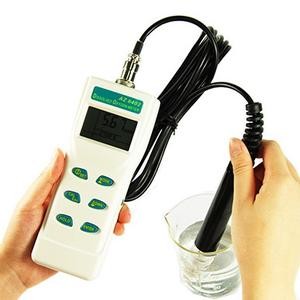- Your cart is empty
- Continue Shopping
Aquarium Water Quality : The Importance of Dissolved Oxygen (2022)
-
Irosh Akalanka
- Posted on
- 1 comment

In Aquarium Oxygen is as critical to fish life as it is to human life. Dissolved oxygen (DO) refers to the oxygen gas that is dissolved in water. Fish absorb the DO directly from the water into their bloodstream through their gills. Also, the micro organism (Beneficial Bacteria/Nitrifying bacteria) live in the fish tank needs oxygen to breakdown fish waste into Ammonia,Nitrite to Nitrate. Hypoxia is the main disease fish facing cause of lack of oxygen.
Page Contents
ToggleDefinition of Environmental Hypoxia (Low DO)
Environmental hypoxia means that a low concentration of dissolved oxygen (DO) exists in the water. Oxygen is the most critical water-quality factor for proper fish health, but it is poorly soluble in water. For example, the maximum amount of oxygen that can dissolve in freshwater at 28 ° C (82 ° F) is 7.84 mg/l.
This compares with over 150 mg O2 per liter of air at sea level; there may be less
oxygen if the Aquarium system is crowded or has inadequate aeration. Temperature and, to a much lesser extent, salinity has a significant influence on oxygen solubility. Thus, the higher the temperature and the higher the salinity, the lower the total amount of oxygen that will dissolve in the water.

fish gasping on water surface causing lack of DO
Natural Oxygen Sources
Oxygen can enter the water from photosynthesis or by diffusion of atmospheric oxygen. In a pond without
mechanical aerators, photosynthesis is the most important source of oxygen (and is also the cause of many diurnal changes in pond water quality ).
A certain amount of algae/Plants in a pond is desirable because it increases oxygen production and thus allows a greater number of fish to be stocked. High fish stocking densities also result in large algae populations because of the plant nutrients that are released from fish excrement.
Oxygen concentration is highest near sunset because net oxygen production occurs during the day. At night, oxygen levels decline because of the cessation of photosynthesis. Because plant
and animal respiration (including microbial degradation of organic matter) occur continuously, a net loss of oxygen occurs at night. Thus, oxygen levels are at their lowest level just before sunrise.
PONDS
Low oxygen is common in ponds, especially in summer, when warm temperatures both decrease oxygen’s solubility and increase the pond organisms ’ metabolism and subsequent oxygen demand. An intimate relationship exists between oxygen levels and pond metabolism.
While it is desirable to have algae in a pond to increase oxygen production, too many algae can cause wide fluctuations in DO, because algae are both the major producers and consumers of oxygen in most ponds. Consequently, the great nocturnal oxygen demand can cause a low DO by sunrise.
AQUARIUM AND OTHER HIGH-DENSITY SYSTEMS
The most obvious cause of environmental hypoxia in high-density, closed-culture systems is due to failure of aerators, which leads to an acutely low oxygen level. This common sequel to an electrical power failure can cause acute mortality in a home aquarium or other system.
Because the oxygen may be off for only a short time and since the power often returns to normal after the fish have died without the aquarist observing the power failure, such events must be diagnosed from the history.
Survival of only air-breathing fish (e.g., anabantids, clariid catfish) is one clue that acute hypoxia may be responsible. The heavily planted aquarium could become hypoxic at night because of the plants ’ respiration. However, this is rare, since mechanical aeration prevents this problem.
Signs of Low Oxygen
Acute environmental hypoxia is defined as a rapid (within minutes to hours) drop in DO to lethal or near-lethal levels. It is often accompanied by acute and frequently catastrophic moralities. Common behavioral signs include lethargy and the congregating of fish near the air-water interface, where oxygen levels are highest. Hypoxic fish are often anorectic.
A classical sign of asphyxiation is an agonal response, with the mouth open and the opercula flared, although this is not pathognomonic for environmental hypoxia.
Chronic environmental hypoxia is defined as a long-term (days or longer) sub-optimal dissolved oxygen level in a culture system. Chronic hypoxia does not kill fish outright but causes considerable stress. At least 5 mg/l of dissolved oxygen is needed for optimal growth and reproduction of most fish. Below this level, food consumption decreases and becomes less efficient and growth slows.
A DO of less than 2 mg/l is very stressful and may predispose fish to opportunistic infections. If DO remains below 1 mg/l for any period of time, most fish die.
Diagnosis of Low Dissolved Oxygen
A definitive diagnosis of low DO can only be done by measuring the DO in water at the site or by immediately preserving the water sample. Once the sample is removed from the aquarium or pond, its oxygen concentration changes immediately because it is mixed with air.
Oxygen measurements made on unpreserved water samples submitted to the clinic are not valid. Thus, a diagnosis of environmental hypoxia is based upon the history, unless an electronic meter is used to measure oxygen on-site or unless the sample is immediately preserved, using a commercial test kit.

Oxygen test kit

Treatments for Low Dissolved oxygen (DO) in the aquarium
- Acute hypoxia
a. Restore oxygen levels immediately
b. Monitor ammonia and nitrite daily for 1 week to be sure that biological filtration is functioning properly
- Chronic hypoxia
a. Increase aeration
b. Reduce feeding
c. Reduce fish density


1 Comment